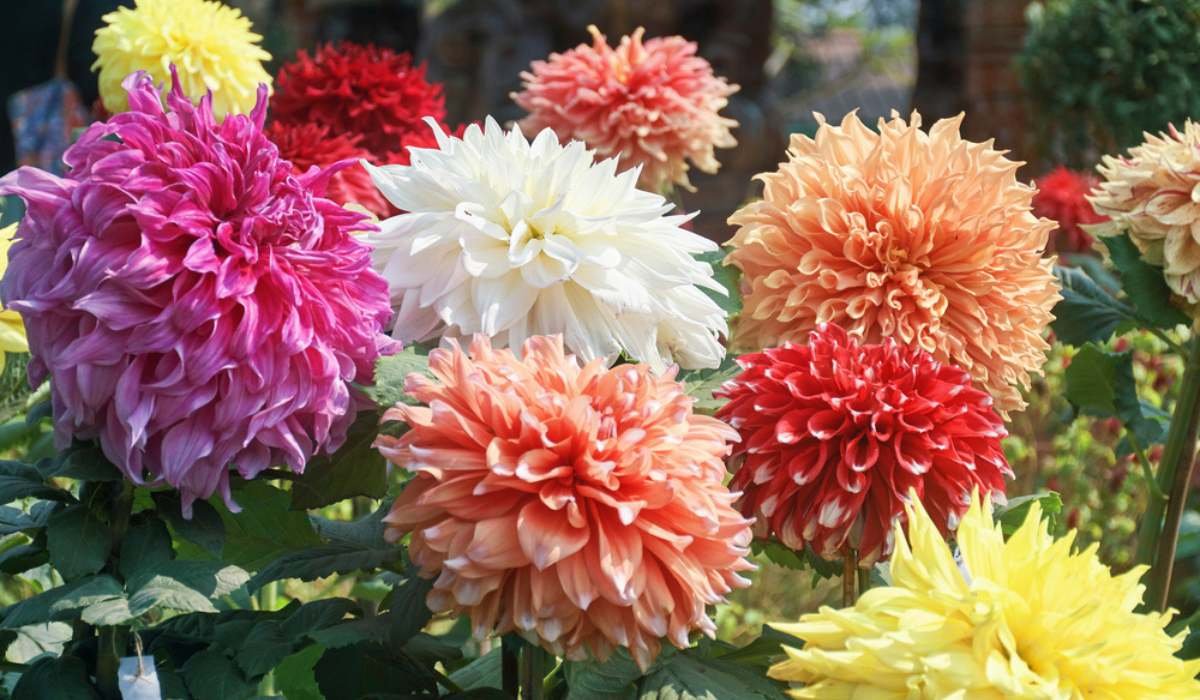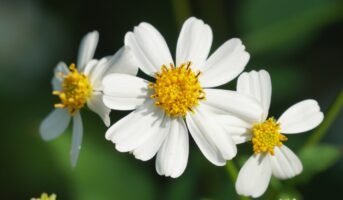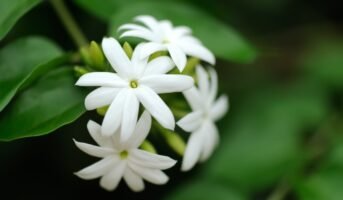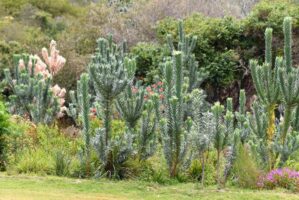Dahlia plants are a lovely addition to any yard or home and stand for grace and charity. Dahlias come in a wide variety of varieties, so you will surely discover one that you enjoy. Caring for these distinctive spring blossoms is easy if you remember a few tips, especially in the summer.
To help you start caring for your dahlias, we’ll go through proper dahlia care below, including water, sunlight, temperature, joint diseases, and other care requirements. We also covered advice on how to grow dahlia plants in your garden. Therefore, keep reading.
Dahlia Plant: Quick facts
| Name of species | Dahlia plant |
| Common name | Dahlia |
| Botanical name | Dahlia spp |
| Plant type | Perennial |
| Family | Asteraceae |
| Native place | North America, Central America |
| Soil type | Loamy, well-drained |
| Soil pH | Neutral, acidic |
Dahlia Plant: Overview
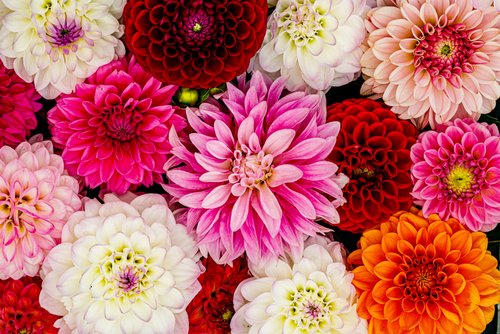
The dahlia plant comes in various colours, patterns, sizes, and flower varieties and blooms from the middle of summer until the first frost. Plants come in different sizes and shapes, from little border plants to species with plate-sized blooms on six-foot plants. Although there are wide varieties, most dahlias have long, upright stems that make the flowers stand out. Both florists and plant breeders lust after dahlias, which have over 20,000 variants and 30 species and are native to Mexico and Central America.
A genus of tuberous plants known as dahlias is typically grown as perennials. However, if you live in an area with a harsh winter, you might consider increasing dahlias as annuals. Most dahlia plants are grown in the Americas (especially Central America). Still, they have been imported worldwide to have grown in Europe, Asia, Africa, and Australia.
How to grow Dahlia plant from seed?
- You may cultivate dahlia plants by either preserving the seeds from the plants from the previous year or purchasing them at the nursery in your area.
- Put seeds straight into a seedling tray filled with seed starting mix four to five weeks before the final frost.
- Keep the soil moist and relocate the tray to a window with light.
- When the seeds have germinated, wait until each seedling has one complete set of leaves before replanting it in a different cell or small pot.
- The seedlings should be transplanted into the garden bed as soon as the ground outdoors reaches a temperature of 65 to 70 degrees Fahrenheit.
Growing and care for Dahlias throughout the season
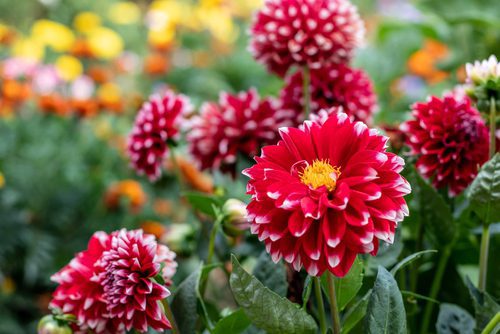
Sunlight: Dahlias require six to eight hours a day of direct sunlight. If you live in a hotter climate, place the plant in a shaded area to prevent scorching during the hottest afternoon hours.
Watering: Contrary to many other flowers, dahlia plants don’t require a lot of water. If you live in an area where summer rains are often, it usually suffices for the plant to survive. If not, water thoroughly once or twice a week. The plant needs water if the top layer is dry.
Mulching: In dry, hot areas, you might wish to mulch to help retain moisture, but generally, we advise against it to keep the soil warm and the leaves from drying.
Temperature: For dahlias to grow effectively, the soil must be warm. These flowers should be planted in areas with the earth that is at least 60 degrees Fahrenheit warmer. Planting dahlias in too cold soil (below 50°F) can cause them to suffer, so wait until spring or the beginning of summer to do so.
Common pests and plant diseases: Slugs, caterpillars, earwigs, and thrips are just a few of the frequent pests and plant diseases that adore dahlias. Slugs are not a big issue, while the foliage is tender and young. Usually, slugs don’t become a problem until the plants are fully grown. However, dahlias concern some gardeners, who claim that deer stay away from them. So, just in case, keep your flowers safe.
Dahlias are also prone to fungus-related diseases like powdery mildew. Plants should be spread apart to allow for enough air circulation, and the leaves should be maintained as dry as possible. Use neem oil or another natural medicine to treat any infections you find.
Common problems with Dahlias
- Stem rot can develop in dahlia beds with heavy soil, poor drainage, too much watering, and other factors.
- Garden beds should never have standing water, and the soil should constantly be amended before planting.
- Dahlias also appear to topple over and droop on hot summer days.
How to grow Dahlia plant in your flower garden?
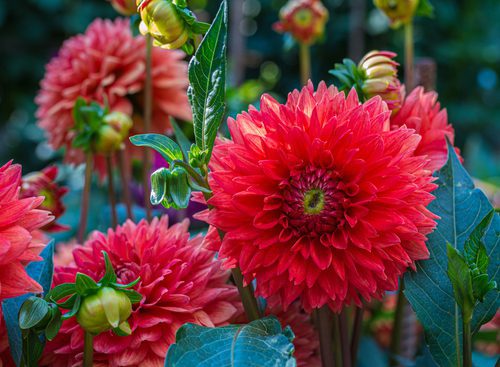
Dahlias are one of the most gorgeous and durable cut flowers, bringing colour to a flower garden. As long as you adhere to the below-mentioned instructions, planting dahlias is a simple procedure.
- Choose healthy dahlia tubers: In your local garden centre, look for dahlia tubers with pink buds and some green growth; avoid any wrinkled appearance.
- Plant dahlia tubers in spring: Dahlias should only be planted outside after the last frost date because they do not fare well in cold temperatures and require a minimum ground temperature of 60 degrees F. Dahlias can be started indoors four to six weeks before the final frost and then transplanted outside. If beginning dahlias indoors in a container, the tubers should be placed two inches deep in a soilless potting mix. Wait to water until you notice new growth.
- Choose a sunny location with wind protection: In most areas, dahlia plants require six to eight hours of direct sunlight per day to grow. In hotter climates, giving dahlias some afternoon shade is essential to prevent plants from overheating during the hottest part of the day.
- Plant dahlias in soil that drains well and contains rice: Dahlias need a pH of 6.5 to 7.0 to thrive. Add peat moss or sand to clay-rich soil to improve drainage and soften the ground. Bone meal can also be used to feed the soil with nutrients.
- Provide lots of room for dahlia plants: Smaller bedding dahlias should be placed eight to 12 inches apart. Dinner plate dahlias of larger varieties may need two to three feet of space.
- Bury dahlia tubers in stages: Dahlia bulbs should be planted in about 8 inches deep holes and more significant than the root ball. Insert the bulb and eyes up, and fill it with about two inches of dirt. Fill up the remaining area in the hole once the sprouts appear.
- Wait to water until the dahlias have sprouted: Do not water them until they have grown: If you water the tuber immediately after planting, the tuber may rot. Instead, wait until the flower has broken through the ground. Avoid mulching unless you are growing in a scorching environment.
Why grow Dahlias?
For the following reasons, think about incorporating a beautiful dahlia plant in your yard:
Most zones allow them to live
In most temperate zones, dahlias may survive the winter with the proper care and return the following year.
Blooms that endure
Dahlias can bloom for over four months if properly pruned. You might even find that they last for a few more weeks than that in certain places.
Typically, deer do not bother them
There is a greater likelihood that deer won’t go near your dahlias.
They can be raised in pots
Dahlias are flexible plants that can be grown in flower beds or pots. So, regardless of your space, you might think about using them in your garden.
Conclusion
Dahlia plants are perfect for anyone wishing to add some colour to their gardens because they are stunning spring and summer blooms that only require a small amount of maintenance. However, they need a lot of sunshine and are sensitive to cold temperatures, so monitoring them is critical, especially in the early stages of growth.
FAQs
How do you keep dahlias blooming?
Though slightly shaded locations can also support dahlia plants, keeping your plants in a place that receives direct sunlight is recommended. They like rich, well-drained soil; remember that the soil should have a consistent moisture level but not become overly wet since this could cause the roots to rot.
When do Dahlias bloom?
After planting your dahlias, you'll need to wait around eight weeks until they begin to blossom. The first dahlias in your yard will often open their petals around mid-July.
What type of soil is right for Dahlias?
Dahlias prefer a pH between 6.5 and 7.0. In addition, dahlias prefer rich soil; they do not grow in poor soil.
How long do Dahlias bloom?
The bloom time for dahlias is 120 days. As a result, if your dahlias begin to bloom in the middle of July, you can anticipate enjoying the lovely blooms until the middle of November. Dahlias will keep your garden vibrant for a very long time after many of your other flowers have withered away.
Housing News Desk is the news desk of leading online real estate portal, Housing.com. Housing News Desk focuses on a variety of topics such as real estate laws, taxes, current news, property trends, home loans, rentals, décor, green homes, home improvement, etc. The main objective of the news desk, is to cover the real estate sector from the perspective of providing information that is useful to the end-user.
Facebook: https://www.facebook.com/housing.com/
Twitter: https://twitter.com/Housing
Email: [email protected]
